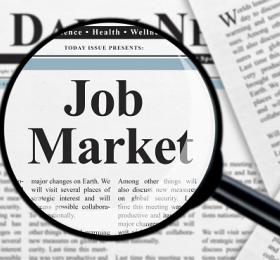
Let’s get to the point: the data isn’t very good these days, but it also doesn’t support the case for a recession (at this juncture). Another lackluster labor report hit the wires this morning promptly at 7:30 CDT. US payrolls expanded by a modest 136,000 in the month of August. The silver lining is that the unemployment rate ticked down to 3.5% and is now at the lowest level in 50 years. Meanwhile, the U6 rate, a more comprehensive gauge of unemployment, declined to 6.9% from August’s reading of 7.2%. Wage gains remain muted as hourly earnings flatlined mom, while increasing 2.9% relative to this time last year. The inflation outlook remains quite anchored in light of a variety of economic and demographic factors.
Manufacturing is an issue both here and abroad. Of course, the US economy is not nearly as dependent on manufacturing as say, Germany. Europe, as a whole, is muddling through its own version of economic malaise, attempting to keep growth alive and recession at bay. The PMI’s have not been impressive. For a number of years, Germany was the standout performer on the Continent, but exports have sagged as global economic activity has waned. At the same time, the European Central Bank (ECB) has recommitted itself to further easing. Many Germans have contested the latest round of asset purchases as merely pushing on a string with German 10-year bunds squarely in negative territory. The head of the ECB, Mario Draghi, will be leaving his post at the end of the month and former IMF chairman, Christine Lagarde, will be taking the reins. In his final weeks, Draghi has repeatedly advocated the need for more fiscal stimulus from European governments to support the actions of the Bank. He has gone so far as to recommend modern monetary theory (MMT) for consideration. We will be keeping a close eye on all forms of stimulus, be it monetary or fiscal, and their efficacy.
US services data continue to show that the economic expansion remains intact, however, its momentum is certainly fading. Global trade is slowing and it’s showing up in various economic reports. Services are far and away the most important component of US economic growth, so we will keep a watchful eye on both headline figures and their components. Mr. Powell of the Federal Reserve has stated and restated his commitment to the economic expansion underway in the US, but there are more signs that perhaps the Fed went too far last year. The New York Fed has intervened multiple times in recent weeks to shore up short-term rates. This is possibly the consequence of an overly aggressive balance sheet unwind orchestrated by the Powell Fed.
While October has begun with the same level of volatility that characterized much of the fourth quarter last year, the present environment is both similar and dissimiliar to yesteryear. Critically, the US remains locked in a trade war with China, using tariffs as its primary tool to bring about negotiations. In recent days, the US administration has announced tariffs on certain European products, after the WTO’s ruling on European aircraft subsidies. Brexit remains an open question. Global economic activity is mired in uncertainty. However, the Federal Reserve has changed its tune dramatically having moved from the prospect of interest rate hikes and balance sheet normalization to a more conducive approach designed to extend the economic recovery. As a result, the TWP strategic outlook remains unchanged with respect to currencies, rates, and equities, though the likelihood of increased volatility across assets is certainly rising.
Market Outlook: Bullish USD, Neutral Duration, Neutral Equities